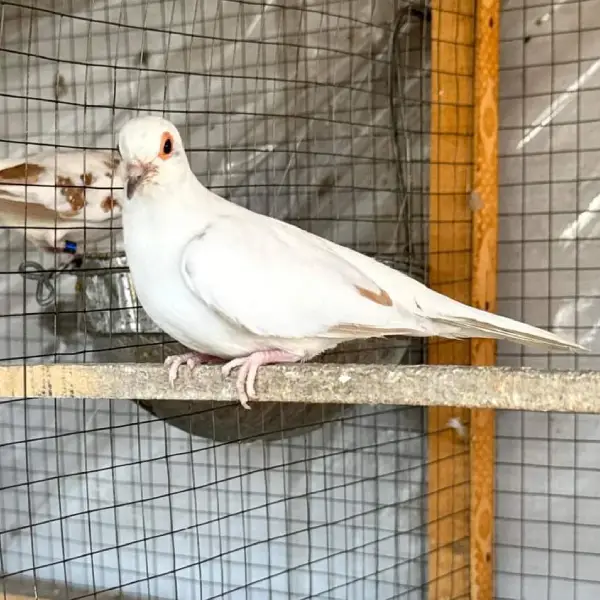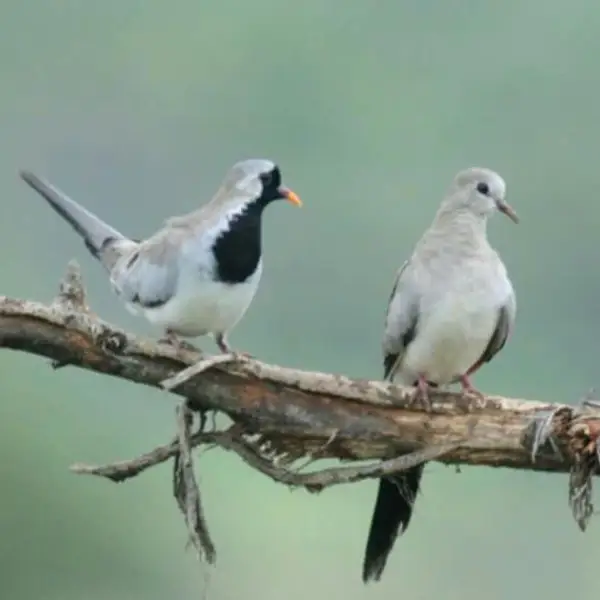Free shipping order over 20,000
Common Lutino
₨ 6,250 Original price was: ₨ 6,250.₨ 5,000Current price is: ₨ 5,000.
- Scientific Name: Agapornis spp. (the exact species can vary, such as Fischer’s Lovebird or Peach-faced Lovebird)
- Size: Typically around 13-17 cm (5-7 inches) in length, depending on the species.
- Color: The Lutino mutation results in a bird with bright yellow plumage. This vibrant yellow color comes from the genetic mutation that affects pigment production. Lutino lovebirds may have some variations in shade, but they generally display a uniform yellow body. In addition to the yellow feathers, Lutino lovebirds often have reddish or orange beaks and feet.
- Beak: Typically reddish or orange.
- Eyes: The eyes of Lutino lovebirds are usually dark brown or black, which contrast sharply with the bright yellow feathers.
- Legs and Feet: Usually pale or flesh-colored.
Share
Share on facebook
Share on email
Important Keys:
Habitat
- Distribution: Lutino lovebirds are bred in captivity rather than being found in the wild. They are a popular mutation of various lovebird species, including Fischer’s and Peach-faced Lovebirds.
- Environment: In captivity, Lutino lovebirds thrive in aviaries or spacious cages that allow them to fly and interact. They do well in indoor environments with proper space and social interaction.
Diet
- Primary Food: Their diet mainly consists of seeds, including millet, canary seed, and other small seeds. A balanced pellet mix is also recommended.
- Supplementary Food: Fresh fruits, vegetables, and occasional protein sources like egg food or mealworms are important for their overall health.
- Feeding Behavior: They forage for food and are typically provided with a variety of seeds and other food items in feeding dishes.
Breeding
- Breeding Season: In captivity, Lutino lovebirds can breed year-round if conditions are favorable.
- Nest Location: They build nests in enclosed spaces, such as nest boxes or dense vegetation. In captivity, they use wooden or artificial nest boxes.
- Egg Quantity: Clutches usually consist of 4-6 eggs.
- Incubation Period: The eggs are incubated for about 21-23 days, with both parents participating in the process.
- Fledging: Chicks typically fledge around 6-8 weeks after hatching.
Lifespan
- In the Wild: Lovebirds generally live around 10-15 years.
- In Captivity: With proper care, they can live up to 15-20 years or more.
Behavior
- Social Structure: Lutino lovebirds are highly social and thrive in pairs or small groups. They are known for their affectionate and playful nature.
- Vocalization: They produce a variety of sounds, including chirps, whistles, and soft calls, which are used for communication and social interactions.
![]()
Be the first to review “Common Lutino” Cancel reply
Related Products
-
-22%
Strawberry Finch
₨ 4,500Original price was: ₨ 4,500.₨ 3,500Current price is: ₨ 3,500. -
-13%
Blue Star Finch
₨ 23,000Original price was: ₨ 23,000.₨ 20,000Current price is: ₨ 20,000. -
-11%
Albino Shaft Tail
₨ 22,500Original price was: ₨ 22,500.₨ 20,000Current price is: ₨ 20,000. -
-25%
Common Cut-throat
₨ 24,000Original price was: ₨ 24,000.₨ 18,000Current price is: ₨ 18,000. -
-8%
Albino Cut-throat Finch
₨ 65,000Original price was: ₨ 65,000.₨ 60,000Current price is: ₨ 60,000. -
-20%
-
-40%
Red Pied Dove
₨ 10,000Original price was: ₨ 10,000.₨ 6,000Current price is: ₨ 6,000. -
-20%
Cape Dove
₨ 37,500Original price was: ₨ 37,500.₨ 30,000Current price is: ₨ 30,000.
Sign Up for Exclusive Birds Care Tips and Offers from Phool Panchi
Company links
Category
Contact
© 2024 Phool Panchi | Developed By v3Studio














Reviews
There are no reviews yet.